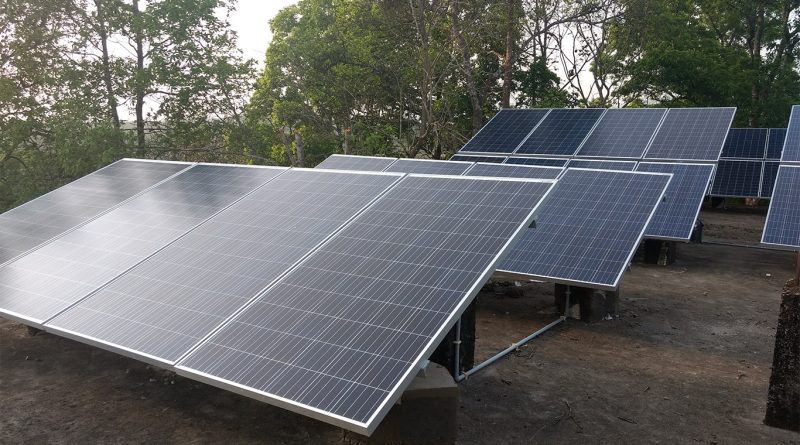From Waste to Repair: Extending the Value of Off-Grid Solar Products
Off-grid solar solutions provide essential energy to communities without reliable electricity, greatly improving life quality and economic opportunities. Yet, despite their promise, many off-grid solar products have a limited lifespan and quickly become unusable.
A recent report highlights that restricted repair options and limited spare part availability contribute significantly to the short life cycle of these products. Addressing these challenges through repairability could not only ensure energy access but also promote sustainability by reducing waste.
The importance of repairability in off-grid solar for energy access
Off-grid solar products are a lifeline for rural areas, enabling essential services, powering homes, and supporting small businesses. However, these products often have a limited lifespan—typically around three to four years—and lack robust repair support. With constrained warranties and few available spare parts, communities dependent on solar often face a frustrating gap in reliable energy access when products break down. Many stakeholders argue that prioritizing repairability can address this issue, particularly by introducing repairable designs and increasing spare part availability.
The impact of repairability goes beyond technical issues and encompasses economic equity, as improved repair access reduces costs and empowers households that cannot afford regular replacements. More repairable products would help align the off-grid solar sector with broader sustainability and social equity goals, offering a more dependable energy solution to underserved regions.
Challenges in maintaining and repairing off-grid solar products
Significant challenges exist in making off-grid solar products repairable. First, the high cost and limited availability of spare parts make even simple repairs difficult. Since most parts are sourced internationally, distributors struggle to provide affordable repairs in remote areas, where high transportation costs add further delays. Batteries, a primary cause of breakdowns, often require replacement, but are not always easily accessible or replaceable.
Restrictive designs also hinder repairs. Proprietary, non-modular designs mean minor repairs often require specific parts or tools that are difficult to obtain in local markets. Many manufacturers favor full replacement of products, which is quicker but contributes to waste and can burden consumers with higher costs. To address these issues, the report calls for standardized, modular designs that would empower local technicians to perform more effective repairs.
Logistics add yet another barrier. Distributors serving remote communities must transport products long distances, making repairs costly and time-intensive for end-users who may experience lengthy delays in service. In many regions, there is also a lack of technical repair training, which limits repair capacity and increases dependency on centralized repair centers, which are often too far from the communities they serve.
Recommendations to improve repairability and sustainability
The report suggests practical strategies to enhance repairability for off-grid solar products. Adopting modular, repair-friendly designs for high-failure components, such as batteries, could make repairs easier and reduce downtime for users. Standardized parts across product lines would also allow local technicians and distributors to access and stock essential parts more easily, simplifying the repair process.
A ‘repairability index’ is also recommended, which would help consumers, donors, and investors identify products with greater repair potential. This index would incentivize manufacturers to improve product longevity and allow consumers to make informed choices aligned with their sustainability goals. Similar initiatives have seen success in Europe, where transparent repairability ratings encourage sustainable design and consumer awareness.
Expanding technical training for local technicians is another critical recommendation. Establishing programs to train technicians at the local level could improve the scope and quality of repairs while creating job opportunities in rural communities. Basic repair training materials could also be made openly accessible, empowering users to perform simple repairs on their own. Such a repair ecosystem would reduce dependency on centralized repair centers and create a more resilient, self-sufficient approach to off-grid solar maintenance.
Benefits of a repair-focused approach in the off-grid solar industry
Investing in repairability offers long-term benefits for the environment, end-users, and the industry itself. Repairable designs can significantly reduce electronic waste—a rising concern as more solar products reach end-of-life in regions lacking recycling infrastructure. The goal is to reduce the need for frequent replacements, and repairable products that align with circular economy principles, reducing waste and reinforcing the industry’s commitment to sustainability.
Promoting repairability can also strengthen consumer trust and attract environmentally conscious investors. As awareness of electronic waste grows, consumers and NGOs increasingly scrutinize product lifespans, and companies that prioritize repair and sustainability can build brand loyalty and differentiate themselves in the market. Improved consumer trust may lead to broader product adoption as communities gain confidence in the durability and reliability of solar solutions.
Sources:
